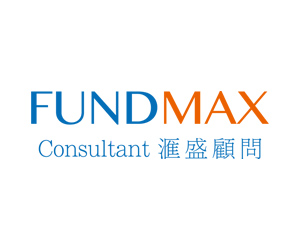Want to be in the loop?
subscribe to
our notification
Business News
ECONOMIC RESTRUCTURING TOWARD IR 4.0
Restructuring the economy in the period 2016 - 2020 should focus on changing the structure and level of the economy, improving the efficiency of the use of social resources, gradually modernising economic sectors, labour productivity, total factor productivity (TFP), and the competitiveness of the economy, said Dr Luong Van Khoi, Deputy Director of the National Centre for Socio-economic Information and Forecast (NCIF).
Labour and industry transition
The Organisation for Economic Co-operation and Development (OECD) and the International Labour Organisation (ILO) believe that the Industrial Revolution 4.0 (IR 4.0) will remove the employment of 66 million workers in developed countries in the coming years, and that jobs likely to be replaced by robots include 44 per cent of factory workers, 40 per cent of cashiers, 20 per cent of taxi drivers, 18 per cent of customer care workers and 16 per cent of pilots.
At the same time, the ILO also forecasts that 40.8 million workers in the four industries will be affected significantly by the Industrial Revolution 4.0 by 2025. Based on the findings of the ILO, the research team from the NCIF assessed that in the development process of the Industrial Revolution 4.0, there will be about 20-40 per cent of potential workers being switched to other occupations, unemployed or underemployed. It is estimated that between 8 and 16 million workers will be impacted when Industrial Revolution 4.0 is successful.
In Vietnam, the research team of the NCIF has carried out a research and a forecasting model. Accordingly, from now to 2025, production and business establishments in the Vietnamese economy will shift from low production mode (equivalent to the second and third Industrial Revolution) to higher level (equivalent to the Industrial Revolution 4.0), thus the minimum requirement for all labour in the Textiles, Commerce, Services, Recreation, Transportation, Health, Education and Agriculture sectors must have the necessary skills to successfully implement the process. As a result, the forecast shows that by 2025, there will be about 42.8 million workers in fields strongly affected by the Industrial Revolution 4.0 and about 31 million workers to be trained or retrained in order to meet requirements and skills in the new context or to switch to other occupations.
Besides, the research has identified the sectors and individuals less likely to be replaced by robots as lawyers, doctors and researchers.
How to restructure
According to experts, the economic restructuring in the period 2016 - 2020 will focus on changing the structure and level of the economy, improving the efficiency of using social resources, gradually modernising economic sectors, labour productivity and the competitiveness of the economy. At the same time, a more rational and dynamic economic structure with higher competitiveness and greater potential growth will be formed. Besides, the restructuring will promote the transformation of the growth model from width to depth.
When recommending the direction for restructuring some sectors and industries in the context of the Industrial Revolution 4.0, the research team suggested that there should first be a new generation FDI strategy. The new FD strategy should ensure improvements in overall investment and policy implementation; Successful transition to business environment 4.0; improving and linking the spillover effect of FDI. Meanwhile, priority should be given to attract FDI into advanced technologies and sectors, environmentally friendly technologies, clean energy and renewable energy; medical equipment manufacturing, financial services, logistics and other modern services. Attracting high-tech and efficient agricultural production; development of modern technical infrastructure; especially new professions based on the Industrial Revolution 4.0 also need to be prioritised.
In the manufacturing sector, Dr Le Huy Khoi from Ministry of Industry and Trade, said: the Industrial Revolution 4.0 opens opportunities for developing production methods, increasing labour productivity, improving information connection system, cost savings. Improving new technology will help businesses access modern technology and huge amounts of data on the market and customers in order to build effective business strategies; simultaneously optimise the production process, improve product quality, promote the quality of consumption and after-sales policy. He suggested that a comprehensive assessment of the level of readiness to participate in the Industrial Revolution 4.0 should be developed and implemented for each sector of the industry and trade. Considering and selecting sectors, stages of production to invest and apply artificial intelligence will be based on that assessment.
With respect to the orientation of economic restructuring in the 2016-2025 period, Dr Le Xuan Sang, Deputy Chairman of the Vietnam Institute of Economics, said that Vietnam's policies should focus on increasing investment in research and development of artificial intelligence applications for industrial production and commercial development. At the same time, it is necessary to complete the legal infrastructure, create a development environment and upgrade the technical infrastructure for electronic payment in commercial transactions and support the development of new business forms, and develop the service sector. On the other hand, it also important to establish policies to overcome the downside of the Industrial Revolution 4.0 such as environmental pollution, unemployment, social disparity, information security and other unwanted impacts.
Source: VCCI
Related News

VIETNAM’S GDP TO GROW 5.5% THIS YEAR – WB
This forecast is based on the assumption of a moderate recovery in manufacturing exports in 2024, fueled by rebound growth of 8.5% year-on-year in the fourth quarter of 2023 and 17.2% year-on-year in the first quarter of 2024, reflecting strengthening global demand, said Dorsati Madani, senior country economist at the WB in Vietnam.

FARE REFUND FOR VISA REJECTION
Cathay Pacific will offer full refunds for cases of visa rejection to provide you with the confidence to explore the world with ease. If you are planning to fly to a destination that requires an entry visa, you can now book with greater peace of mind.

FOUR COMMODITIES POST Q1 EXPORT VALUE OF OVER 5 BILLION USD
The total export turnover of agricultural, forestry, and fisheries products in the first three months of 2024 is estimated to reach 13.53 billion USD, an increase of 21.8% compared to the same period of 2023.

MOIT PROPOSES SCHEME TO BOOST RENEWABLE ENERGY PROCUREMENT
The proposed Direct Power Purchase Agreement (DDPA) mechanism, outlined in the draft decree, targets organisations and individuals consuming electricity from the 22kV power grid or higher, with a monthly consumption averaging 500,000kWh. However, residential households are excluded from direct procurement.

REAL ESTATE BONDS PLACE PRESSURE ON ISSUING FIRMS
The ministry’s recent report underscores concerns within Vietnam’s corporate bond market for 2023 and 2024. It emphasizes the critical need to address hindrances to the real estate sector in line with the objectives provided in Government Resolution No. 33/NQ-CP, which aims to stabilize the industry.

DA NANG CUSTOMS FOCUSES ON DEVELOPING CUSTOMS-BUSINESS PARTNERSHIPS
Da Nang Customs Department issued an action plan for developing customs-business partnership in 2024. One of the new events this year is the workshop on “Settlement reports for enterprises engaged in outsourcing, export production and export processing” held in Da Nang Customs Department on April 16, 2024.

































